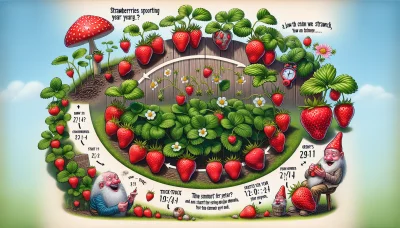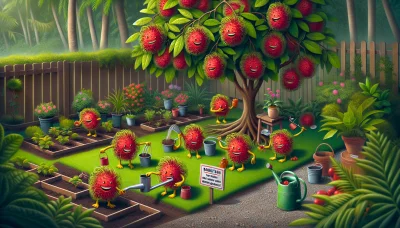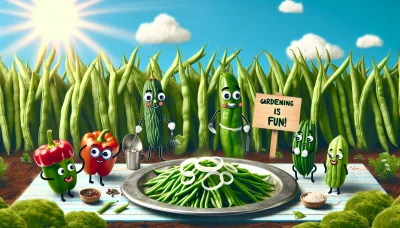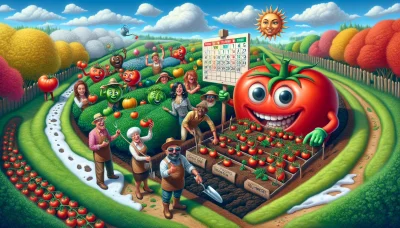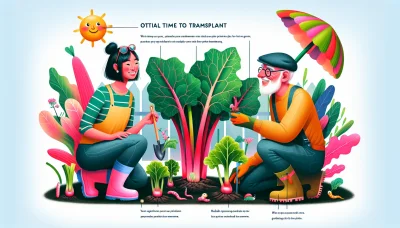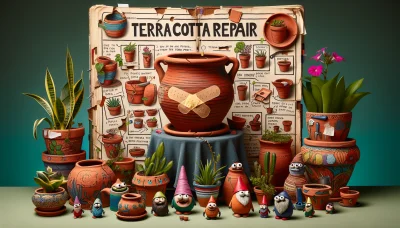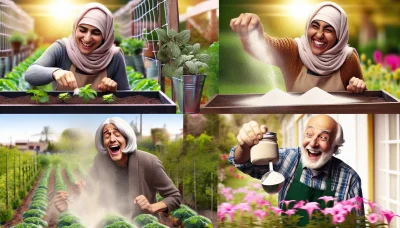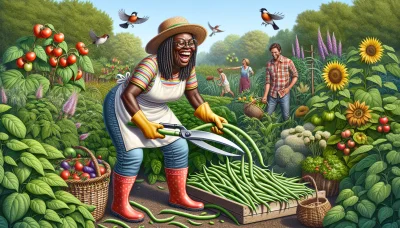When should i plant tomatoes Quiz
Test Your Knowledge
Question of
When Should I Plant Tomatoes?
Timing is crucial when it comes to planting tomatoes. Understanding the right moment to plant can significantly influence the quality and yield of your harvest. Tomatoes require a delicate balance of temperature, sunlight, and soil conditions to thrive. Planting too early or too late in the season can expose your plants to unfavorable conditions, potentially hindering their growth and productivity. Hence, identifying the optimal planting time is essential for any gardener aiming for a bountiful tomato harvest.
Understanding Your Growing Zone
To find your growing zone, a gardener can refer to the USDA Plant Hardiness Zone Map, which is available online. This map divides North America into 11 separate zones, each of which represents a 10-degree Fahrenheit difference in the average annual minimum temperature. Knowing your specific zone is crucial for planting tomatoes because it determines the best planting time and variety selection. Tomatoes require a certain temperature range to thrive, and planting them in the appropriate zone ensures they grow in optimal conditions, leading to a successful harvest.
The Best Time to Plant Tomatoes
- Frost-Free Zones: Year-round planting is possible, but the best results are seen when planted during the cooler months.
- Mild Winter Areas: Plant in late winter or early spring as soon as the soil is workable and the threat of frost has passed.
- Cooler Northern Regions: Planting should be done after the last frost date in spring, typically late May or early June.
- Hot Summer Areas: Early planting is crucial, either in late winter for a spring harvest or late summer for a fall harvest, to avoid peak summer heat.
- High Altitude Locations: Short growing seasons mean planting in early summer or using starts instead of seeds to ensure a harvest before the first frost.
Starting Tomatoes Indoors
Starting tomato seeds indoors offers numerous benefits for gardeners looking to get a head start on the growing season. By beginning the germination process inside, you can control the environment more effectively, ensuring your tomato plants are protected from the unpredictable weather and temperature fluctuations of early spring. This method also allows the plants to develop strong root systems and become more resilient before facing the outdoor elements. Additionally, starting tomatoes indoors can extend the growing season, giving you a jump on harvesting those juicy, ripe tomatoes sooner than if you were to wait and plant seeds directly outdoors.
Transplanting Tomatoes Outside
Tomato plants are ready to be moved outdoors when they have developed strong stems, are about 6-10 inches tall, and have at least two sets of true leaves. It's also crucial to ensure that all danger of frost has passed and the soil temperature has reached at least 60°F (15°C) before transplanting. Before the move, tomato plants require a process called "hardening off." This process involves gradually acclimating the plants to outdoor conditions over a period of 7-10 days. Start by placing them outside in a sheltered, partially shaded spot for a few hours each day, gradually increasing their exposure to sunlight and outdoor temperatures. This helps prevent shock, allowing the plants to adjust smoothly to their new environment.
Caring for Your Tomato Plants
Watering
- Water deeply once a week, providing 1-2 inches of water to encourage deep root growth.
- Avoid overhead watering to minimize leaf diseases; use a soaker hose or drip irrigation instead.
- Water in the early morning to reduce evaporation and allow foliage to dry before evening.
Fertilizing
- Use a balanced fertilizer every 4-6 weeks, or as recommended by the product instructions.
- Consider a side-dressing of compost or well-rotted manure mid-season to boost plant health.
- Be cautious with nitrogen-heavy fertilizers, which can promote leaf growth over fruit production.
Pruning
- Remove suckers that grow in the axils between the stems and the leaves to improve air circulation and fruit size.
- Limit pruning to the bottom leaves to prevent sunscald on the fruits.
- Support plants with stakes or cages to keep them upright and promote healthy growth.
Common Challenges in Growing Tomatoes
| Problem | Solution |
|---|---|
| Blossom End Rot | Ensure consistent watering and apply calcium to the soil. |
| Early Blight | Remove affected leaves, avoid overhead watering, and apply fungicides if necessary. |
| Tomato Hornworms | Manually remove worms and consider introducing beneficial insects like ladybugs. |
| Spider Mites | Use insecticidal soap or neem oil, and increase humidity around plants. |
| Cracking | Maintain consistent soil moisture and consider using varieties resistant to cracking. |
| Leaf Curl | Ensure proper watering and avoid high nitrogen fertilizers. |

